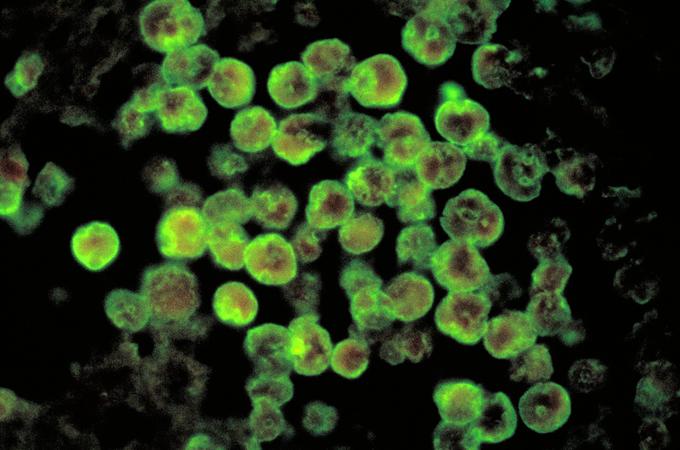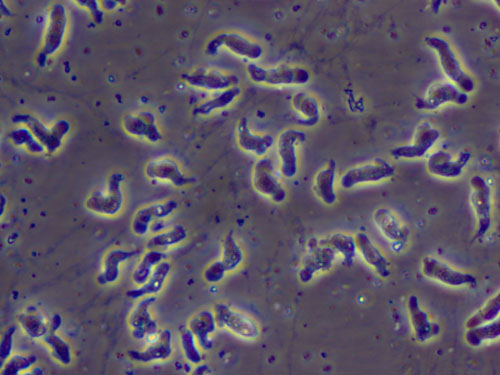The brain-eating amoeba, scientifically known as Naegleria fowleri, is a microscopic organism that can cause a rare but often fatal infection in humans. Referred to by its abbreviation, N. fowleri, this amoeba thrives in warm freshwater environments and has been the subject of numerous studies due to its devastating effects on the human brain. In this article, we will explore the nature of this organism, how it infects humans, the symptoms it causes, and ways to prevent exposure.

What is Naegleria Fowleri?
Naegleria fowleri is a free-living amoeba found in soil and warm freshwater sources such as lakes, rivers, hot springs, and poorly maintained swimming pools. It thrives in temperatures up to 115 degrees Fahrenheit (46 degrees Celsius), making it more common in tropical and subtropical regions. This organism is not typically harmful when encountered outside the human body, but under specific conditions, it can invade the central nervous system, leading to a severe and often deadly infection.
How Does Naegleria Fowleri Infect Humans?
Infection occurs when water containing the amoeba enters the body through the nose. Once inside, the organism travels along the olfactory nerve to the brain, where it begins to destroy brain tissue. Activities such as swimming, diving, or even using contaminated water for nasal irrigation increase the risk of exposure. It is important to note that the amoeba cannot infect humans through drinking contaminated water, as stomach acid kills the organism before it can reach the brain.
Symptoms of Infection
The infection caused by Naegleria fowleri is called primary amebic meningoencephalitis (PAM). The progression of symptoms is rapid, and early detection is critical for survival. Below are the stages of symptoms that infected individuals may experience:
Initial Symptoms
- Severe headache
- Fever
- Nausea and vomiting
- Stiff neck
These initial symptoms typically appear within one to nine days after exposure and are often mistaken for bacterial meningitis due to their similarity.
Advanced Symptoms
- Confusion and altered mental status
- Seizures
- Hallucinations
- Loss of balance
As the infection progresses, the amoeba causes extensive damage to brain tissue, leading to severe neurological symptoms. Without prompt medical intervention, the condition worsens rapidly, often resulting in coma and death within five days of symptom onset.
Diagnosis and Treatment
Challenges in Diagnosis
Diagnosing an infection caused by this organism is challenging because its symptoms closely resemble those of other more common conditions like bacterial meningitis. Physicians rely on laboratory tests, including cerebrospinal fluid analysis, to identify the presence of the amoeba. However, due to the rarity of the infection, many healthcare providers may not immediately consider it as a potential diagnosis.
Treatment Options
There is no guaranteed cure for infections caused by Naegleria fowleri, but certain medications have shown promise in treating the condition. A combination of antifungal and antimicrobial drugs, such as amphotericin B, miltefosine, and fluconazole, is often administered intravenously. Early treatment significantly improves the chances of survival, though the mortality rate remains alarmingly high at over 97 percent.
Prevention Strategies
Preventing exposure to Naegleria fowleri is the most effective way to avoid infection. While complete eradication of the organism from natural water sources is impossible, individuals can take several precautions to reduce their risk.
Avoiding Warm Freshwater Sources
One of the simplest ways to prevent infection is to avoid activities in warm freshwater bodies, especially during periods of high temperature. If swimming is unavoidable, individuals should take the following steps:
- Hold your nose shut or use nose clips while swimming or diving.
- Avoid stirring up sediment at the bottom of lakes or rivers, as the amoeba may reside in these areas.
- Do not submerge your head underwater in warm freshwater sources if you have open wounds or nasal irritation.
Ensuring Safe Water Practices
Household water systems can also harbor the organism, particularly in areas with inadequate chlorination. To minimize risks:
- Use boiled or distilled water for nasal rinsing or sinus irrigation.
- Regularly clean and maintain swimming pools to ensure proper chlorination levels.
- Install water filtration systems designed to remove microorganisms from tap water.
Raising Awareness
Educating communities about the risks associated with Naegleria fowleri is crucial for prevention. Public health campaigns can inform people about safe swimming practices and the importance of maintaining clean water supplies. Additionally, healthcare professionals should be trained to recognize the signs of infection early to improve patient outcomes.
Geographical Distribution and Risk Factors
While Naegleria fowleri is found worldwide, infections are more commonly reported in warmer climates. Regions with prolonged periods of high temperatures, such as parts of the southern United States, Australia, and Southeast Asia, are particularly susceptible. Recreational water activities during summer months pose the greatest risk, as higher temperatures create ideal conditions for the organism to thrive.
Demographics Most at Risk
Children and young adults are disproportionately affected by this infection, likely due to their increased participation in water-related activities. Boys and men are also more frequently diagnosed, possibly because they are more likely to engage in behaviors like diving or jumping into water, which increase the likelihood of water entering the nasal passages.
Ongoing Research and Developments
Due to the high fatality rate of infections caused by Naegleria fowleri, researchers are actively studying new methods to combat the organism. Some promising areas of research include:
- Developing vaccines to prevent infection.
- Identifying novel drug compounds that can effectively target the amoeba.
- Improving diagnostic tools to detect the organism more quickly and accurately.
Collaborative efforts between scientists, public health officials, and policymakers are essential to advancing our understanding of this deadly pathogen and reducing its impact on human health.
Public Health Implications
The threat posed by Naegleria fowleri extends beyond individual cases of infection. Outbreaks, though rare, can lead to widespread panic and mistrust in recreational water facilities. Governments and health organizations must work together to implement stringent safety measures and educate the public about the risks and prevention strategies associated with this organism.
Role of Climate Change
Climate change is expected to exacerbate the prevalence of Naegleria fowleri by increasing global temperatures and altering freshwater ecosystems. Warmer waters provide a more favorable environment for the organism to multiply, potentially expanding its geographical range. Addressing the broader issue of climate change is therefore critical to mitigating future outbreaks.





